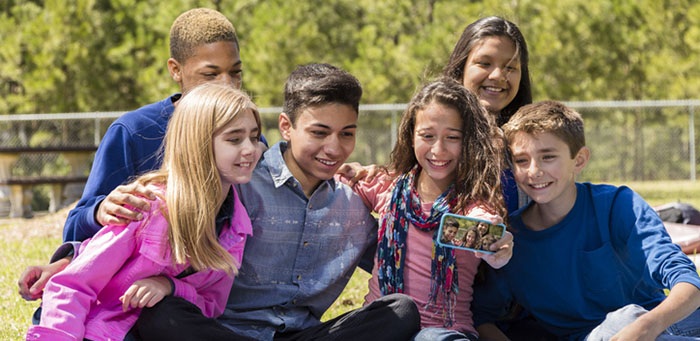How to Help Teens Feel Loved and Supported
For some teens, finding a sense of belonging can be a challenge. During this turbulent stage of youth development, children undergo many physical and emotional changes that may lead them to feel isolated or misunderstood.

The summer months and back-to-school season are a prime opportunity for adults who work with youth to foster healthy connections that help teens feel welcome and supported. If your Y or youth group is experiencing a spike in teen participation, try these five strategies for helping teens feel loved and supported.
1. Develop a New Perspective
In order to truly connect and build relationships with teens, adults must first recognize and overcome any common stereotypes they may hold.
Pause for a moment and think about a typical teenager. What comes to mind? Words like lazy, self-absorbed, loud, obnoxious, disconnected or troublemaker are just a few of the harmful stereotypes that are often attributed to teens. Stereotyping creates a barrier that keeps teens from feeling like they belong. Turn negative labels into opportunities to welcome and develop teens so they can reach their full potential.
2. Make Nurturing Teens Everyone’s Responsibility
Everyone at your organization plays a role in creating a safe, welcoming space for teens, not just trained youth development professionals. Who welcomes people into the physical space? Encourage that person to learn the names of the young people in your programs and get to know them by asking what’s going on in their lives. Challenge each member of your team to make a connection with at least one teen. Be sure to build time into meetings to share tips and celebrate connections made. Everyone at your organization plays a role in creating a safe, welcoming space for teens, not just trained youth development professionals. Who welcomes people into the physical space? Encourage that person to learn the names of the young people in your programs and get to know them by asking what’s going on in their lives. Challenge each member of your team to make a connection with at least one teen. Be sure to build time into meetings to share tips and celebrate connections made.
3. Go Beyond the Transaction
Have you ever been to a restaurant where the server disappears after taking your order? How likely are you to return as a customer when you feel initially welcomed but quickly ignored? Greeting teens when they arrive isn’t enough to create an environment that invites them to return. Welcoming begins with inviting them into conversations, connecting them to new people, encouraging them to be themselves and always inviting them to come back. Here are some tips to get started:
- Practice asking open-ended questions that require more than a yes-or-no answer. Try: “What was the best part of your day?” and then, “Tell me more about that.”
- If you can glean some of their interests, take some time and learn about them for future discussions. For some, making a genuine connection may take time-don’t give up.
4. Dedicate Some Space
Does your Y have a dedicated space for teens to relax and interact? If yes, does it require a fresh update? Having an attractive, appropriate and up-to-date space dedicated to teens is ideal. Creating a dedicated space that reflects the ideas and voices of the teens in your community helps them connect and feel welcome. If physical space is not possible, consider dedicated bulletin boards that highlight programs and events for teens as a simple way to show you’re thinking about them. Posting teens’ school accomplishments, highlighting their volunteer service-hour milestones or posting their artwork are other ways to empower youth and encourage positive choices.
5. Engage the Teen Voice
Teens have a unique perspective that can be easily overlooked. By providing opportunities for leadership, your programs and staff may truly benefit. Think about inviting a teen to attend a board meeting or recruit them as volunteers for programs and special events. If they are enjoying their time with you, they may invite their peers to join them!




